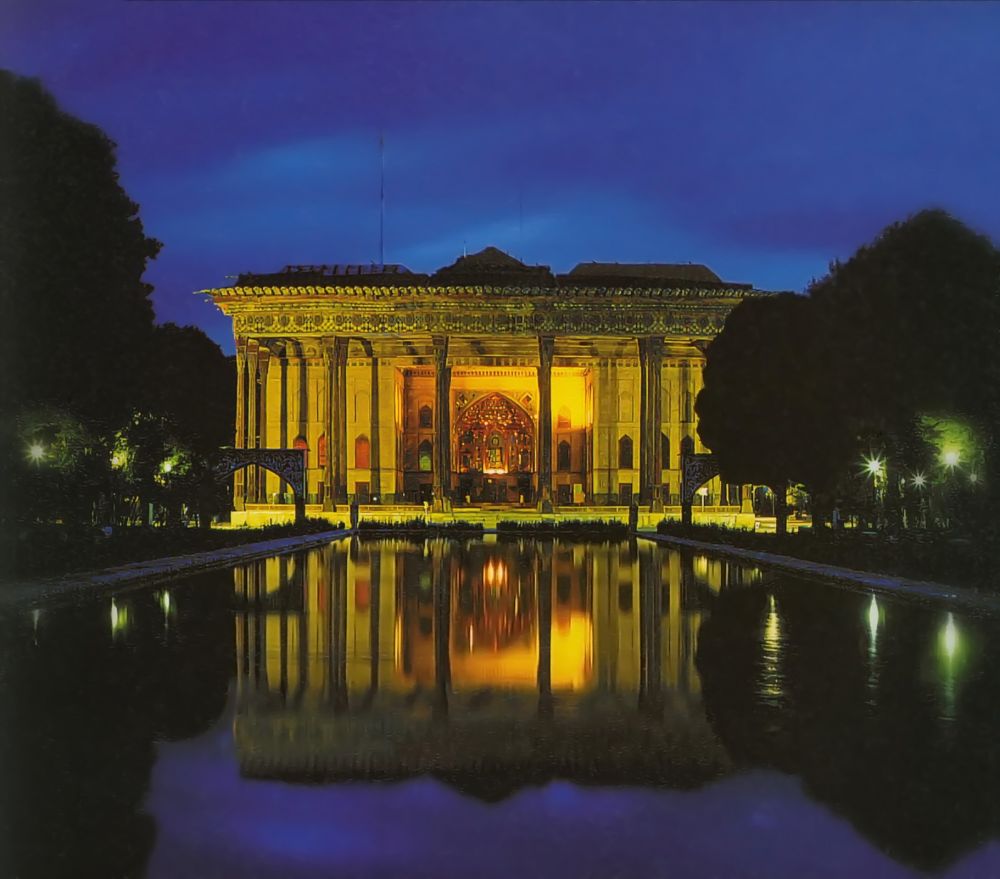

Nestled in the heart of Isfahan, the historical city known as "Half of the World," lies the Chehel Sotoun Palace, a masterpiece of Persian architecture and a beacon of Iran's rich cultural heritage. Its name, which translates to "Forty Columns," is derived from the twenty slender wooden columns supporting the entrance pavilion, which, when reflected in the waters of the front fountain, appear to be forty.
Built in the mid-17th century during the Safavid era, Chehel Sotoun served as a pleasure pavilion and reception hall, delighting guests with its elaborate frescoes, inlaid mirrors, and majestic landscaped gardens. This palace, inscribed on the UNESCO World Heritage List as part of the “Persian Garden” collection, has long attracted visitors from around the globe.
Over the centuries, the palace has witnessed innumerable dignitaries and travelers walk through its domain, contributing to the city's development as a major tourist destination. The influx of tourists burgeoned in the 20th century as Iran increasingly opened its doors to international visitors, highlighting Isfahan's historical jewels, of which Chehel Sotoun remains a crown jewel.
Acknowledging its invaluable position in world heritage and tourism, Chehel Sotoun has undergone extensive conservation efforts to ensure that its splendor endures. Restoration programs and promotional initiatives have been crucial in preserving the palace for future generations and maintaining Isfahan's reputation as a historical and cultural center.
In recent years, there has been a shift towards experiential and educational tourism at Chehel Sotoun, with an emphasis on in-depth cultural immersion. Visitors are increasingly interested in the rich narrative behind the palace's art and architecture, seeking guided tours that offer insights into the historical and political contexts that shaped its creation.
The concept of sustainable tourism has also grown in prominence, with efforts to minimize the environmental impact of tourism on Isfahan’s landmarks. Policies and practices that encourage responsible visitation help preserve the integrity of Chehel Sotoun while allowing tourists to enjoy its beauty and history.
Finally, the digital revolution has not left Chehel Sotoun untouched. The use of augmented reality and virtual tours has started to complement traditional visitation, offering alternatives for those unable to travel and enhancing the onsite experience for visitors, enriching their understanding of this historical treasure.
Today, the Chehel Sotoun Palace remains a testament to Iran's vast history and intrigue. It stands proudly as not only a historical edifice but also as a living museum, where the echoes of the past converge with the footsteps of present-day explorers. For anyone seeking to dive deep into the heart of Persian artistry and royal grandeur, Chehel Sotoun is an essential destination that continues to inspire awe and admiration.